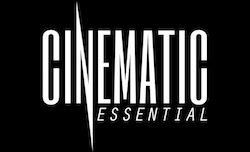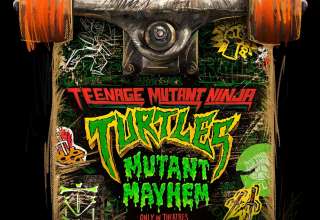Simon Curtis made quite an introduction to the world of film with My Week with Marilyn being his directorial debut. I don’t think he or anyone involved saw how well that movie was going to do. When he came in town to promote Woman in Gold, I obviously had to ask him about that as well as get to hear about some of the other things connected to his film career and a little bit of his past.
Cinematic Essential: After the success of My Week with Marilyn, how did you feel about approaching future projects?
Simon Curtis: It’s funny because at the time I was always thinking “Well that review isn’t very good,” but now people talk about it as this great success retrospectively. But I felt very lucky to make that film. I felt very lucky to make that film with the people I made it with: The producers, The Weinstein Company, the actors: Kenneth Branagh, Judi Dench, Michelle Williams, a little known actor called Eddie Redmayne. So I was very lucky and I thought I would have to be very passionate about something else to make another film because you go through such a complex, intense journey making a film, so I didn’t want to make just any old thing. This story, The Woman in Gold, I felt very passionate about. It was a story that meant a lot to me personally, and I was very excited to go on the journey.
Why did the story mean so much to you?
I’m the product of a Jewish family in the U.K. (United Kingdom) so I was interested in both Maria (played by Helen Mirren) and the story about a woman at the end of her life. The last remaining person from that Jewish community in 1938 who recruited the grandson (played by Ryan Reynolds) of another famous immigrant, Arnold Schoenberg to take on this campaign. At a time where there aren’t many people living who remember the second World War, one of the themes of the film is that we mustn’t forget. It’s landed at a time where anti-semitism – certainly in Europe – is in the air all over again. It seems like a very timely reminder of the perils of anti-semitism, or indeed the perils of picking on anybody because of there race or religion.
This movie covers a large span of time, was there anything left out that you wanted to include?
We alluded to a lot. The joke was my last movie was a week with Marilyn, but this was a century with Maria. It’s a massive undertaking. Frankly, Klimt and Adele was a movie, Adele herself was a movie, Maria and her husband arriving in California building a life of, anything. But you know, we decided the film was this odd couple, these two people take on this campaign. And we wanted to flashback to the past to reinforce that this wasn’t just any old painting. This was a painting that Maria’s uncle commissioned Gustaf Klimt to paint of her aunt. It was a painting that was on the wall of the family home. That family was the epitome of that entire community that was shattered over night when the Nazi’s arrived.
Did you know about the story of this film before?
I read about it, but it was after seeing this documentary that really landed it for me.
Did you ever worry about how the real people from the film would feel?
If you’ve taken on impersonating Marilyn Monroe for the world, nothing is ever frightening! But the emotional truth of it was very important. And the complexities; I didn’t want it to be as simple. I think so many films are simplistic, and I wanted to have the complexity that I felt the story had. Yeah, there are people who are furious that the painting is in New York, but some of them are thrilled! Equally, some people think “Let bygones be bygones,” and other people think you gotta fight for these things. I can see everyone’s point of view and try to get some of that moral complexity into the movie.
How does working on film compare to your previous experiences of working in television and theater?
Well, the kind of t.v. I was lucky enough make isn’t a million miles from making a film. It was like stuff that’s shown on WGBH Masterpiece [Theater] working with great British actors essentially in big projects. We did David Copperfield with Ian McKellan, Maggie Smith and Daniel Radcliffe, and it’s three hours long. That isn’t a million miles… arguably, it’s a bigger thing to do than making a movie. So, there’s not a massive difference between the type of t.v. I did and the type of film [I do] apart from if this was a t.v. thing I wouldn’t even be invited to America and you would be talking to someone else.
And theater?
Theater was a great background in teaching me how to work with actors. I pride myself on being very ambitious with my casting and trying to get great people in all the smaller parts. To have Charles Dance from Game of Thrones or Elizabeth from Downtown Abbey or Jonathan Pryce in smaller parts. And in this film, Katie Holmes and Tatiana Maslany from Orphan Black, who’s gonna be a mammoth star. Also the great German actors: Daniel Brühl, Tom Schilling. They’re some of Germany’s best actors, so they were fantastic to work with.
What do you want audiences to get out of Woman in Gold?
I think the older people will wonder if there’s any unfinished business in their lives. The younger people… In real life, the real Randy is very aware of his own family history and the whole Vienna thing. While as we wanted our film version of Randy to be more of an “All-American” kid growing up in California who learns the value and pain of what his family had gone through to get him to where he is today. So, I hope people will find it entertaining. There’s more comedy in the film. It plays like a comedy at times and certainly plays like a thriller at other times, but a courtroom drama at other times. I hope people will be provoked by it and think about how close they are to the terrible events of World War II, and how those things mustn’t be forgotten.
Have you interacted with any of the living people that the characters are based on?
Randy was very involved. I was doing press with him last week in Washington (D.C.). His acknowledgment that the film feels accurate is terribly important to me. A part of that is that he was important in helping shape the script and so on. That means a lot because it’s such a big story and such a complicated legal procedure and all that. The fact that it lands as accurate is terribly important.
In what ways was the actual Randy Schoenberg (played by Ryan Reynolds) involved with the film?
He would read the script and say “No, that isn’t quite right. What about this or that?” So, it was more that sort of level. He didn’t have any influence on the casting or any influence on the cut. We showed to him early on…Actually, one of the proudest moments of my life was at the Berlin Film Festival premiere and he was in floods of tears, because he was moved by the whole thing. He was on set a couple of times and actually appears in the film. The eagle eyed viewer will be able to see him.
There had to be so much you could have focused on. What was it like putting everything together?
There’s so much we didn’t tell. Maria’s wedding was the last big Jewish social event in Vienna before the onslaught, so we wanted to get that sense of that dance that it was the end of an era. That was important. Actually, the escape was even more complicated than that, but we could only afford that many minutes to tell that story before we derailed the film. And it was very important to me to play the scenes in the past in German because that was part of the identity. I can’t stand those films where they’re talking in English with a German accent for no reason whatsoever. But more than that, it was about a woman who was born in Vienna talking German who lived in America talking English. The film is a love letter to the American immigration policies. These people are able to live great lives in the United States.
Woman in Gold is also very wide spread and had to be very complicated when filming correct?
We were filming in three cities: London, Vienna and Los Angeles. We were filming in two languages. Three time periods: The Adele/young Maria, Charles/Maria, Maria in the present. We had German actors speaking English, English actors speaking German, English speaking actors with Austrian accents. It was all quite a nightmare actually. There was one day we’re standing on the soundstage doing a tiny comedy scene in the interior of the car with Helen holding up a chocolate donut. It was almost playing like a Los Angeles sitcom. And we finished that scene, I walked to the next scene, and it was Klimt painting Adele in this erotically charged film in German at the beginning of the century. It’s like “How could this be the same movie?”
What would it take to pull you back into theater?
The timing being right, the right play and so on. I’m always interested in that, it’s just it’s quite hard because the theater will say “Are you available on October of 2016?” and you think “I hope not.” Then you’re doing a film and you might have to drop out. A friend of mine is going through that at the moment with a big play in London. It’s tricky to balance all of that.



























